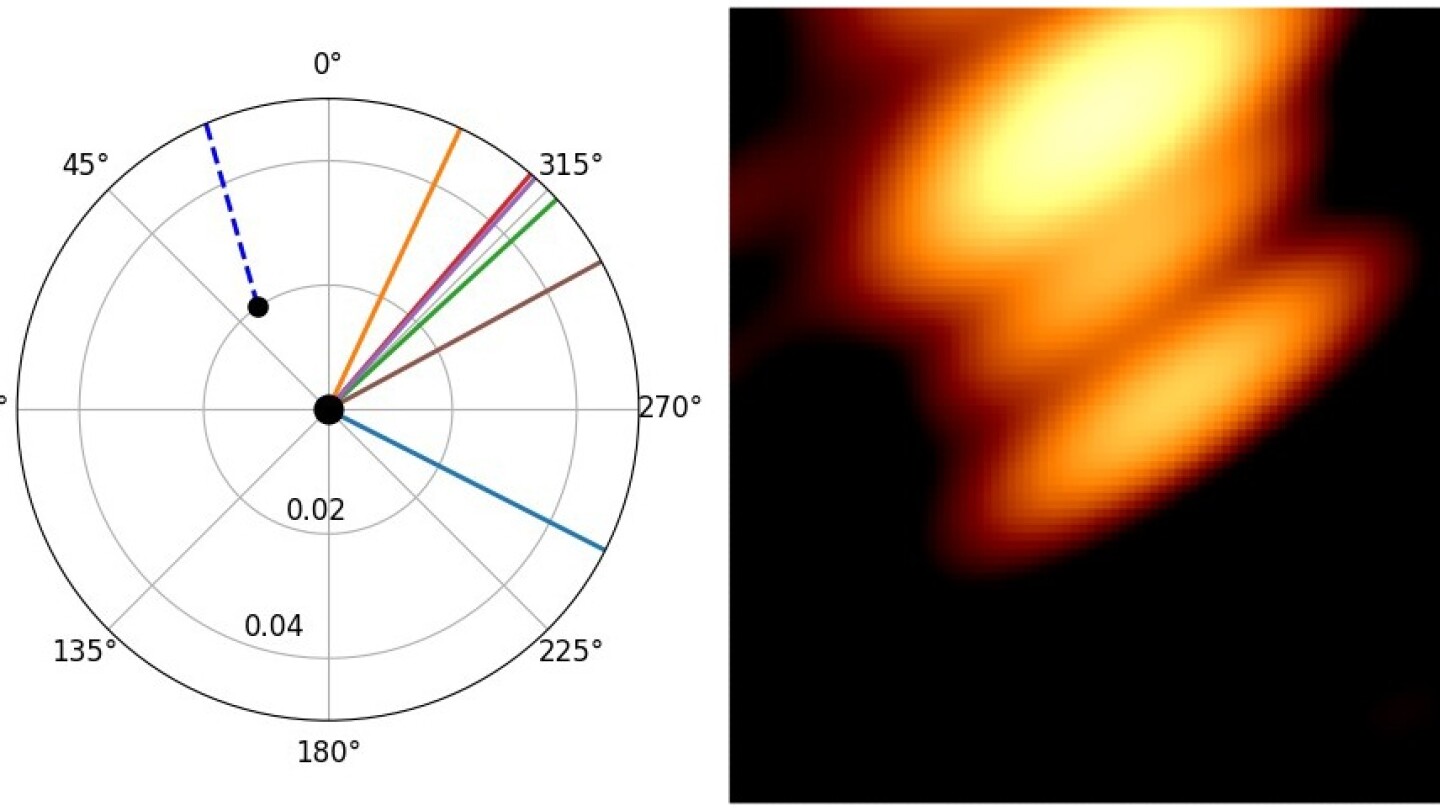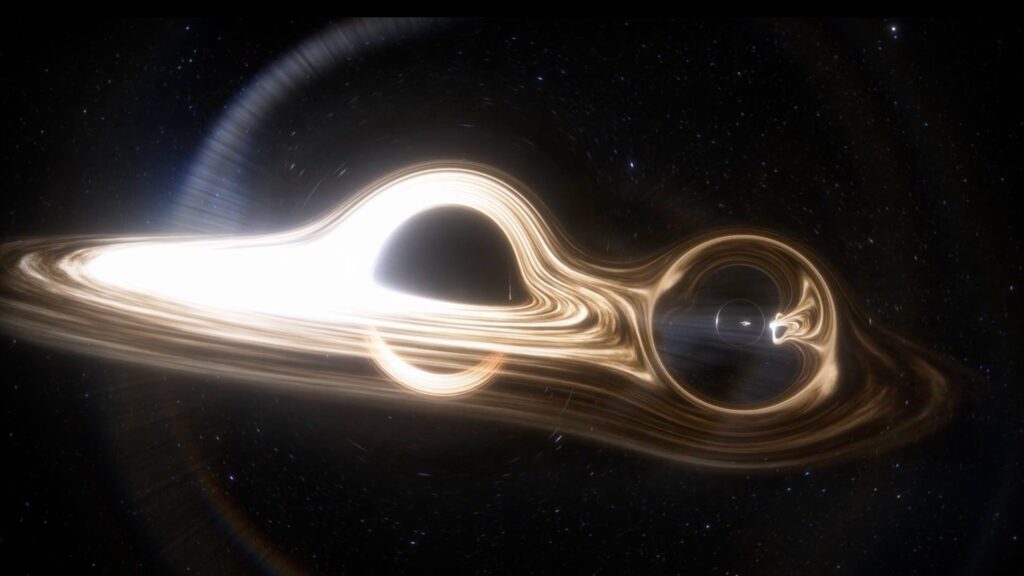For the first time ever, astronomers have photographed two black holes orbiting each other, finally providing visual proof of the existence of a black hole pair.
The two black holes, discovered through faint fluctuations in radio light captured by both ground-based and space-based telescopes, are locked in a 12-year orbit about 5 billion light-years from Earth.
you may like
“For the first time, we have been able to obtain images of two black holes orbiting each other,” lead study author Mauri Valtonen, an astronomer at the University of Turku in Finland, said in a statement. “In images, black holes are identified by the powerful particle jets they emit. The black hole itself is completely black, but can be detected by these particle jets or by the glowing gas surrounding the hole.”
Black holes are born from the collapse of giant stars and grow by eating gas, dust, stars, and other black holes. In some of these greedy space-time ruptures, friction heats the material that spirals into its mouth, emitting light that telescopes can detect and turning it into so-called active galactic nuclei (AGNs).
The most extreme AGN is a quasar. Supermassive black holes, billions of times more massive than the sun, emit gaseous cocoons that emit light trillions of times brighter than the brightest stars. When these jets are directed into the Earth’s line of sight, they are known as blazers.
Astronomers have previously captured images of the supermassive giant at the center of the Milky Way and the nearby galaxy Messier 87, and there is ample evidence of black hole binaries and their mergers in the detection of gravitational waves. But despite long-standing suspicions that OJ287 contained an orbiting pair, telescopes lacked the resolution to separate them from a single point.
In fact, observations of OJ287 date back to before astronomers knew black holes existed. The intensity of its semi-periodic flares was captured in late 19th century photographic plates made to study nearby cosmic objects. By revisiting data from these plates and follow-up observations, astronomers in the 1980s began to speculate that the system’s periodic dimming and brightening was caused by two orbiting black holes.
To arrive at visual evidence, the astronomers used radio images obtained by a network that included the RadioAstron (Spektr-R) satellite, a Russian scientific satellite carrying a radio telescope that operated from 2011 to 2019.

“The satellite’s radio antenna reached halfway around the moon, which significantly improved the resolution of the images,” Valtonen said. “In recent years, we have only been able to use telescopes on Earth, where the image resolution is not very good.”
By comparing features in the images with past calculations, the researchers distinguished two components that correspond to each black hole jet appearing exactly where theory suggests.
Still, some wrinkles remain. The researchers cautioned that they still cannot completely rule out the possibility that the two jets in the image may overlap, meaning there is only one.
“In the future, if resolution close to that provided by RadioAstron is achieved again…it will be possible to examine the ‘tail wobbling’ of secondary black holes,” they write.
Source link

